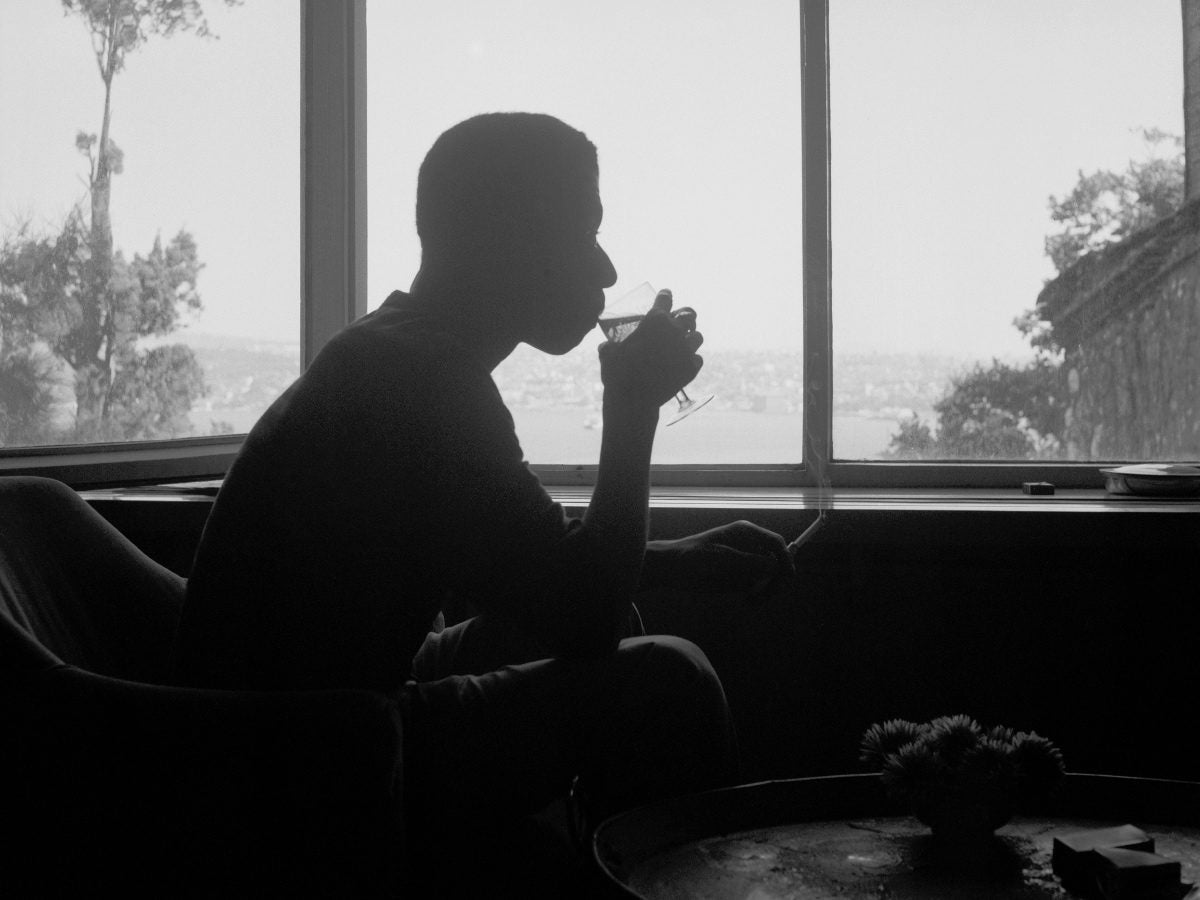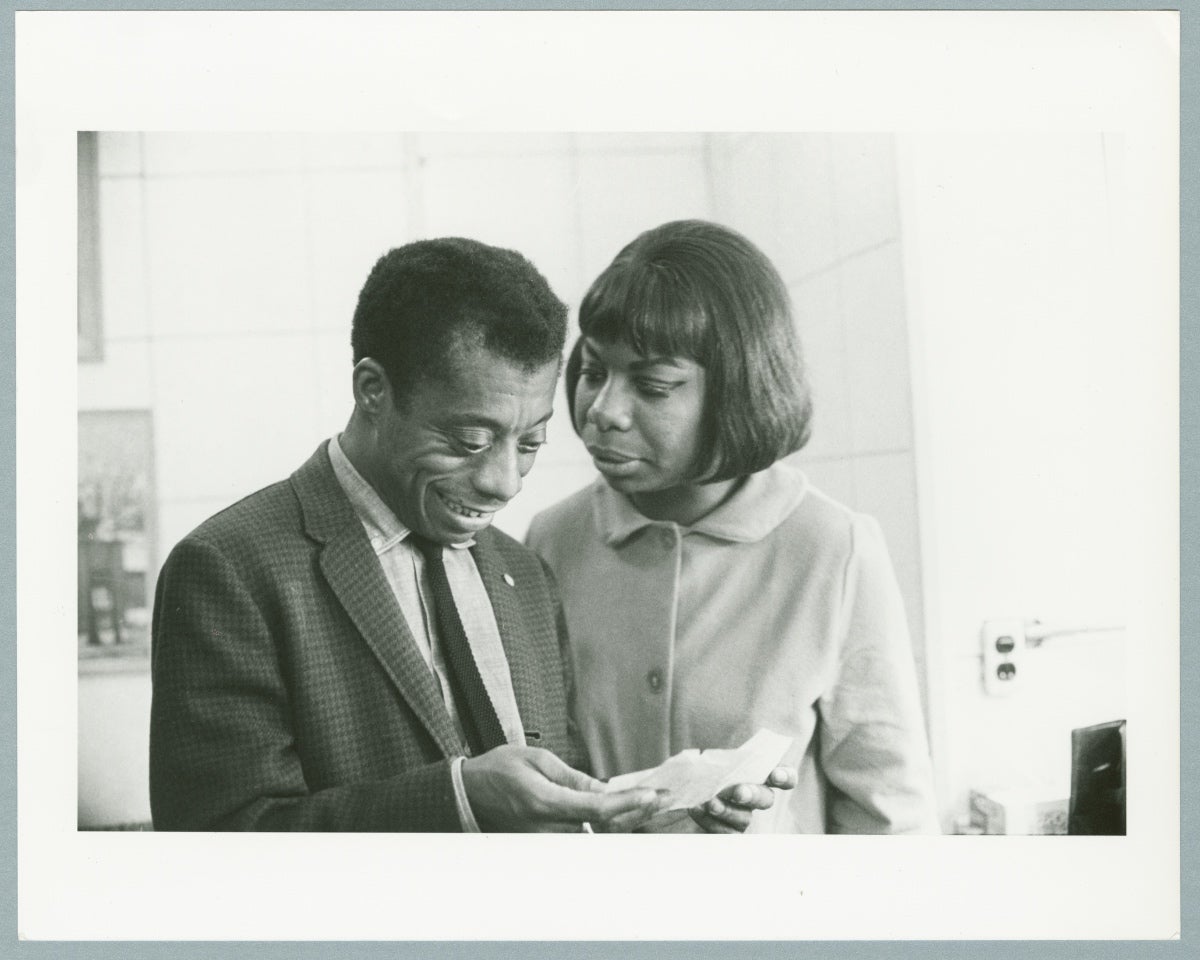 James Baldwin, Istanbul, Artist: Sedat Pakay. Gelatin silver prints and chromogenic prints, c. 1965.
James Baldwin, Istanbul, Artist: Sedat Pakay. Gelatin silver prints and chromogenic prints, c. 1965.  By Okla Jones ·Updated July 11, 2024
By Okla Jones ·Updated July 11, 2024
James Baldwin is one of the most important voices in American history. As a catalyst during the Civil Rights Movement, he gained notoriety for his essays, novels, plays, and poems. His advocacy for human equality also made him an icon amongst several demographics, especially for the Black and LGBTQIA+ communities. In celebration of the 100th anniversary of existence, the Smithsonian’s National Portrait Gallery will host the one-room exhibition, This Morning, This Evening, So Soon: James Baldwin and the Voices of Queer Resistance.
“He has been a torch-bearer for so many things that still hold true for today,” Combs says of Baldwin’s impact. “I think that his legacy is about being able to speak truth to power, and that it is important to be able to live in your truth, and to do that creatively, to do that unapologetically, and to make sure that you use your art or your time on this planet in a way that is seeped in love.”
 ‘Nina Simone with James Baldwin.’ Artist: Bernard Gotfryd. Gelatin silver print, c. 1965.
‘Nina Simone with James Baldwin.’ Artist: Bernard Gotfryd. Gelatin silver print, c. 1965.
Curated by National Portrait Gallery’s Director of Curatorial Affairs, Rhea L. Combs, in consultation with Hilton Als, this show—which was inspired by the 2019 exhibition, God Made My Face: A Collective Portrait of James Baldwin—will explore Baldwin’s legacy alongside his contemporaries in art, music, film, literature and activism. On view from July 12, 2024 through April 20, 2025, This Morning, This Evening, So Soon, explores Baldwin’s sexuality, faith, artistic curiosities and notions of masculinity.
The exhibition also features art by Lyle Ashton Harris, Richard Avedon, Beauford Delaney and Bernard Gotfryd, along with work from Glenn Ligon, Donald Moffett, Sedat Pakay, Faith Ringgold, Lorna Simpson and Jack Whitten. Additional images feature Baldwin alongside other gay civil rights activists who affected his life, notably Bayard Rustin and Lorraine Hansberry. Portraits of fellow creatives in Baldwin’s circle will also be on view, including Beauford Delaney, Essex Hemphill, filmmaker Marlon Riggs and Nina Simone.
Ahead of the show’s opening, Combs discussed the themes surrounding This Morning, This Evening, So Soon: James Baldwin and the Voices of Queer Resistance, her partnership with Als, along Baldwin’s influence on modern society.
‘James Baldwin.’ Artist: Beauford Delaney. Pastel on paper, c. 1963. National Portrait Gallery, Smithsonian Institution, Estate of Beauford Delaney by permission of Derek L. Spratley, Esquire, Court Appointed Administrator; Courtesy of Michael Rosenfeld Gallery, LLC, New York, NY.
ESSENCE: What was the impetus of this exhibition and why did you guys want to celebrate James Baldwin in this particular way?
Rhea L. Combs: Well, I realized that 2024 would be his 100th anniversary, a centennial for his life, and I wanted to acknowledge and recognize him, because he has such an important presence in contemporary life right now. And it wasn’t always the case, but at this moment, I thought on the heels of so many things that have been going on, especially in the last four years, and even when you scroll through social media, there’s rarely a day that goes past when there’s not a quote from him or an image of him that is sort of on your feed. And it was within that moment in the zeitgeist that I thought, “Okay, this would be important for the Portrait Gallery.” But also I want to acknowledge that I was really taken aback and really moved by Hilton Als’ exhibition that he did at the Werner Gallery in 2019.
And so, it was these two things—the fact that I knew that we were coming upon this anniversary of James Baldwin, and knowing the ways in which Hilton had brought forward his sphere of influence in a way that I thought was really, really well done, that I thought this would be a wonderful approach for the Portrait Gallery. I should also point out that at the Portrait Gallery, as the director of curatorial affairs, I’m really working with the curators to look at the ways in which we understand portraiture and how we can challenge our perceptions of portraiture. And so, this exhibition is also in alignment with the perspective that; it’s one thing to have an image of an individual, and yes, that is a portrait, but in many ways that person or that representation of that person is the confluence of so many other people who have helped to shape who they are, and make them who they are, and it was in that vein that we wanted to create this exhibition.
You spoke about Mr. Hilton. I wanted to touch on that a bit. Can you speak to me about his involvement with the exhibition and how did this collaboration come about?
I reached out to him. He was very involved in working with me in terms of thinking through conceptually how this show could be developed. We had a conversation in the early stages of planning where we were talking about his show that he did, again, like I’ve mentioned at this Werner Gallery, but also thinking about other people who he wasn’t able to necessarily include in his exhibition. And we were just thinking about James Baldwin, the queer life, we were thinking about, if you will, folks who were not able to speak as candidly about their sexuality or thought may have been overshadowed by Baldwin’s presence.
It was in that vein of brainstorming and talking through with him that we were like, “Oh, this would be a way that we could pay homage to these individuals who were so critical in his life, but oftentimes had to cut off a part of themselves for the movement.” So, in many ways he was a bit of a thought partner with me in terms of pulling this show together.
With so much work heralding James Baldwin, did you find it difficult in compiling the correct amount of pieces and portraits that you wanted to add to this exhibition?
It’s located in a space that we typically call our One Life gallery. So, this is a one gallery that is dedicated to sort of telling the biographical story of an individual. So, was it difficult? I think part of the job of curatorial work is making these kinds of decisions where it’s really about, what story can you tell, what works of art, or what pieces can help you to really make your point?
Of course, there are reams of other individuals that if you had more space and more time, you could include, but I think that with what we had, we were able to really create a dynamic exhibition that allows you to see his lovely connections with people like Toni Morrison, Nina Simone, Lorraine Hansberry, as well as talk about the way in which contemporary art and contemporary artists have been influenced by him, including someone like Glenn Ligon, who literally has an art piece that uses a title from one of James Baldwin’s essays, to someone like an Essex Hemphill, or a Marlon Riggs who were Black, queer men whose work was definitely in the vein of James Baldwin and who were influenced by him.
So, I think in this space, we’ve been able to do a really nice job of allowing us to tell a rich and dynamic story about someone who definitely had an outsized impact on so many people, and in a range of ways. We have moving image work in there, we have literature, we have books from Lorraine Hansberry, we have images of him with folks like Bayard Rustin, and Dr. Martin Luther King. So, I think we were able to do a really nice job torel=”tag”>black art Black Artist civil rights movement james baldwin smithsonian
The post The National Portrait Gallery’s New Exhibition Honors The Life And Legacy Of James Baldwin appeared first on Essence.
